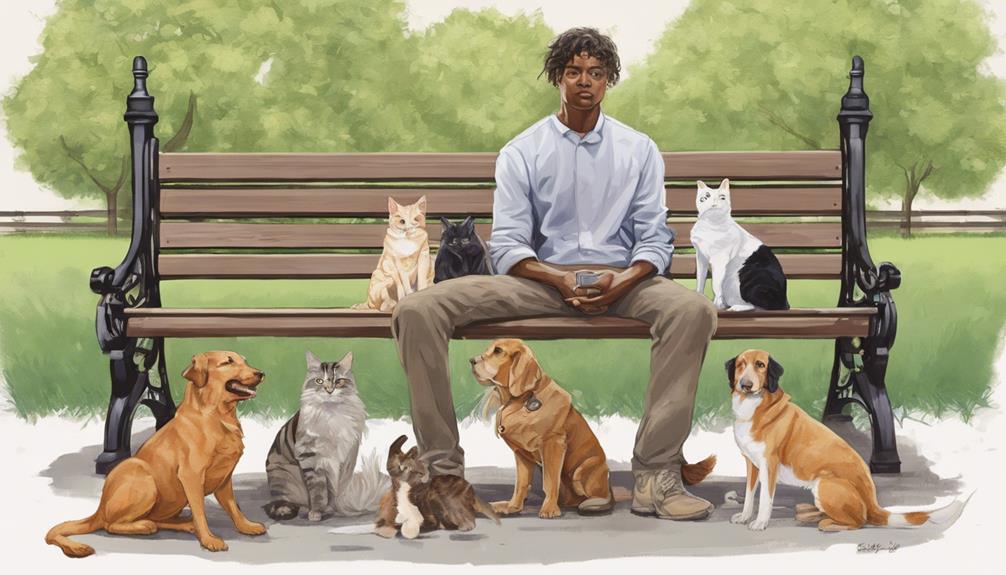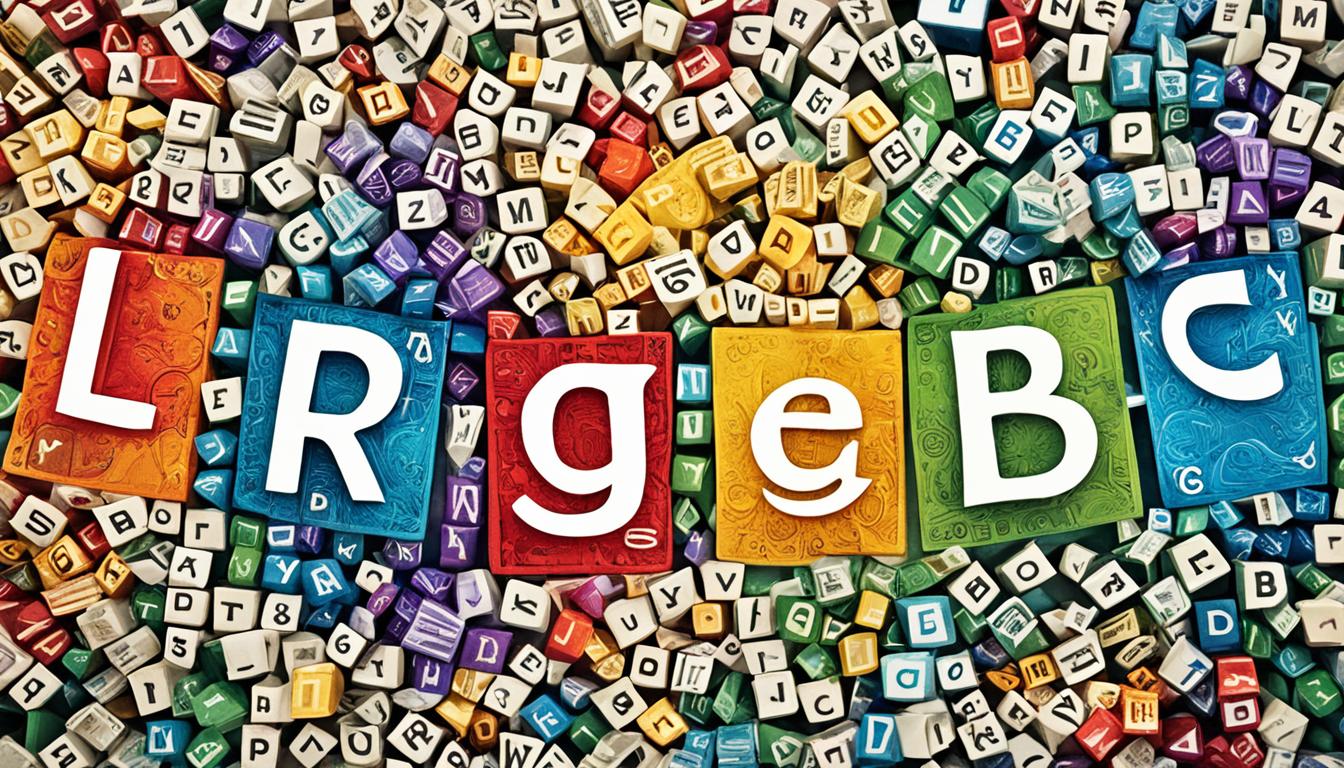As we explore the maze of pet names, we discover the complex significance embedded in a man’s selection of affectionate nicknames. Every ‘babe,’ ‘sweetheart,’ or ‘love’ holds a concealed meaning, ready to be decoded.
But what lies beneath these seemingly simple expressions? What motivations drive these selections, and how do they reflect the complex web of emotions and intentions?
Join us in unraveling the enigma of a guy's pet names, where every 'baby' whispered holds a clue to understanding the unspoken language of affection and connection.
Key Takeaways
- "Hun" can be used casually without romantic interest.
- A guy's use of pet names reveals intentions and feelings.
- Context and frequency of "hun" determine its significance.
- Understanding pet names helps navigate social interactions.
Interpretation of Pet Names
When interpreting pet names, understanding the nuances and context behind terms like 'Hun' is crucial for discerning their true meaning in communication. Cultural influences and social norms play a significant role in shaping the use of pet names.
Emotional connections and personal boundaries also heavily influence the impact of these terms. Different cultures and backgrounds may have varying interpretations of pet names, affecting how individuals perceive them.
Setting personal boundaries is essential when navigating the realm of pet names to ensure comfort and respect. By considering these factors, we can better understand the complexities of pet name usage and the diverse meanings they can hold within different relationships and social contexts.
Reasons for Using Pet Names

Understanding the motivations behind why individuals use pet names, such as 'Hun', can offer valuable insights into their intentions and feelings within a social interaction. When a guy calls you 'Hun', it could signify emotional connection and romantic gestures, revealing a deeper level of affection. On the other hand, it might be intentional flirtation, using subtle cues to express interest without being overt. Deciphering the reasons behind his choice of pet name can help unravel his true feelings and intentions towards you. Below is a table illustrating the dual nature of pet names like 'Hun':
| Emotional Connection | Romantic Gestures |
|---|---|
| Feeling of closeness and affection | Subtle expression of interest |
Different Interpretations of Pet Names
Exploring the nuanced meanings of pet names, like 'Hun', can shed light on the dynamics of social interactions and relationships. Understanding the subtleties of how a guy addresses you, whether sarcastically or affectionately, can provide insights into his attitude and intentions.
When a guy calls you 'Hun' in a condescending manner, it may signal disrespect or underlying communication issues. On the other hand, if he uses this pet name to express attraction, it could be a subtle way of gauging your response and interest.
Deciphering the context and tone in which pet names are used is crucial in navigating social interactions, as they can carry different societal implications and reveal varying levels of connection and engagement.
Communication and Interaction
Let's delve into the dynamics of communication and interaction when it comes to decoding a guy's use of pet names like 'Hun'.
When a guy calls you 'Hun' and you're trying to understand his intentions, pay attention to non-verbal cues and body language. These subtle signs can often speak louder than words.
If you're interested, reciprocating behavior that shows mutual interest can help build a connection. When you respond positively to being called 'Hun', it can signal to him that you appreciate the term of endearment.
Understanding these communication nuances is key to navigating social interactions and deciphering whether his use of pet names signifies something more than just casual friendliness.
Gender Dynamics and Communication Strategies
In navigating gender dynamics and communication strategies, it's crucial to consider the varied interpretations and historical contexts surrounding the use of pet names in interactions.
- Gender dynamics play a significant role in how pet names are perceived and received.
- Workplace implications should be taken into account when using pet names in professional settings.
- Communication strategies should focus on direct inquiry and open dialogue to ensure mutual understanding.
- Social media etiquette is essential when using pet names online to avoid misinterpretation or discomfort.
Understanding the nuances of gender dynamics and communication strategies can help foster respectful and effective interactions. By being mindful of context and individual preferences, we can navigate the complexities of using pet names in a way that promotes positive communication and relationships.
Frequently Asked Questions
What Cultural Influences Can Impact the Use of Pet Names Like 'Hun' by Guys?
Cultural norms play a significant role in how pet names like 'hun' are used by guys. Gender dynamics influence the choice of endearments, reflecting societal values and personal connections. Understanding these influences can provide insights into the intentions behind such terms.
Are There Specific Non-Verbal Cues That Can Accompany a Guy Calling a Woman 'Hun' While Flirting?
When a guy calls a woman 'hun' while flirting, specific non-verbal cues often accompany the interaction. Body language, such as leaning in or maintaining eye contact, can enhance the flirtatious tone of the conversation.
Understanding these subtle cues can provide insights into the guy's intentions and level of interest. Effective communication, both verbal and non-verbal, plays a crucial role in deciphering the underlying meanings behind pet names and expressions of romantic interest.
How Can a Woman Effectively Set Boundaries if She Is Uncomfortable With Being Called 'Hun' by a Guy?
When feeling uncomfortable with being called 'hun' by a guy, setting boundaries is key. Assertiveness and clear communication skills are vital in expressing discomfort and personal preferences. Respecting one's boundaries shows cultural sensitivity and understanding.
Do the Historical Connotations of Pet Names Like 'Hun' Play a Role in How They Are Interpreted in Modern Times?
We believe that the historical connotations of pet names like 'hun' do influence their interpretation in modern times. Linguistic evolution and societal norms have shifted, affecting how these terms are perceived.
Understanding gender dynamics and power dynamics helps us navigate the significance of these terms. Acknowledging the past while embracing present interpretations allows for respectful communication.
Being mindful of individual preferences and setting boundaries fosters healthy interactions.
Can the Frequency of Being Called 'Hun' by a Guy Indicate Different Levels of Interest or Intentions?
When someone calls us 'hun,' the frequency of this endearing term can indeed reveal various levels of interest or intentions.
How often a guy uses 'hun' may hint at his feelings towards us. The more frequent the use, the more his intentions might be revealed.
Understanding the subtle signals in frequency can provide valuable insights into the depth of his connection or attraction.
Conclusion
As we unravel the intricate meanings behind a guy's use of pet names like 'hun,' we uncover a world of hidden intentions and unspoken emotions. Through decoding these seemingly simple expressions, we gain valuable insights into the complexities of human interaction and communication.
Pet names serve as a window into the dynamics of relationships, shedding light on the nuances of flirtation, attraction, and even sarcasm. Join us on this journey of exploration and discovery, as we navigate the labyrinth of pet names and decode the messages behind them.
Emmeline is the backbone of our content creation team, bringing complex psychological concepts to life with clarity and empathy. As our Expert Writer, she crafts engaging, insightful articles that guide readers through the intricacies of personality assessments and what they reveal about the human condition. Her passion for psychology and personal development shines through in every piece she writes.










